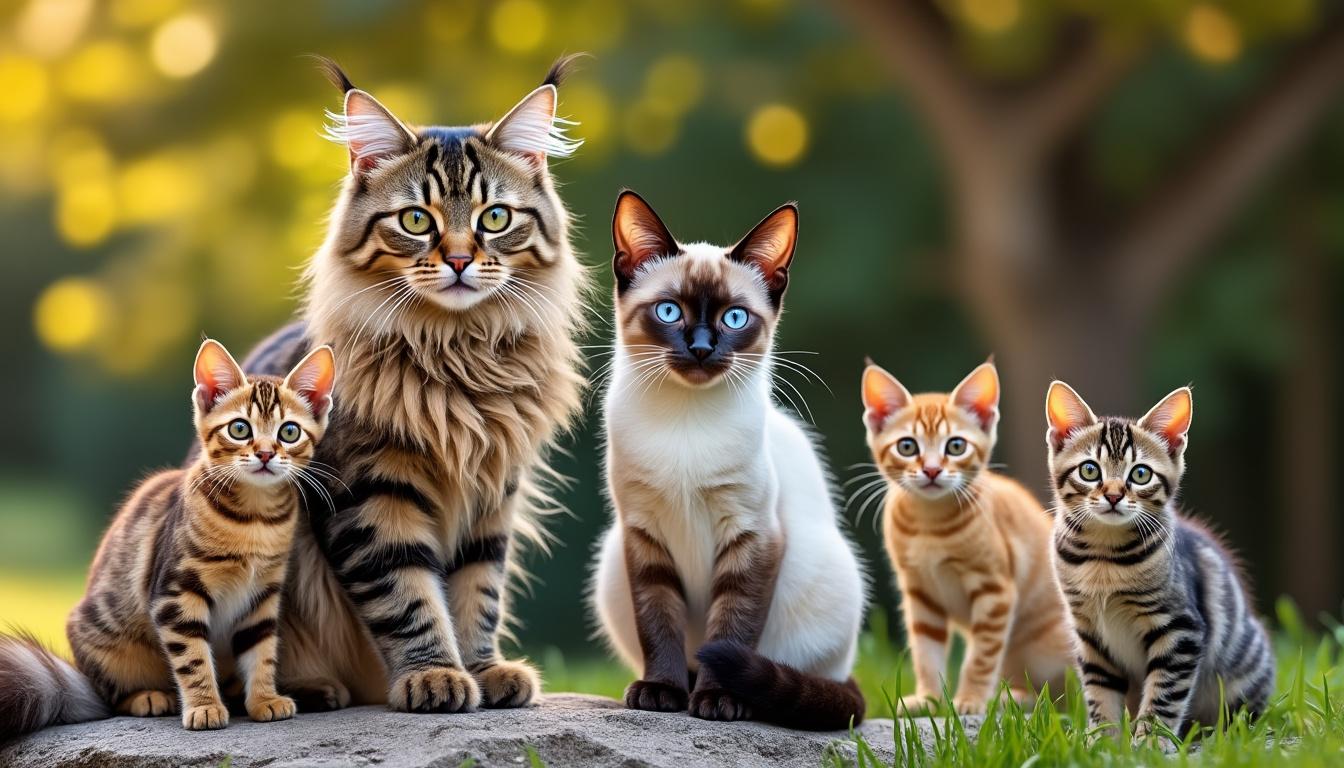Discovering the breed of your feline companion can be a fun and insightful journey! With so many different cat breeds out there, it can be puzzling for cat owners to determine exactly what kind of cat they have. Whether you’ve adopted a stray or brought home a purebred from a shelter, knowing your cat’s breed can help you understand its behavior, care requirements, and even its health predispositions. In this article, we’re diving into various methods and tools to pinpoint your furry friend’s ancestry.
- 🔍 Explore physical characteristics: Understanding your cat’s unique features can provide clues to its breed.
- 📸 Use technology: Tools and apps are now available that can help identify your cat’s breed through photographs.
- 🧬 Consider DNA testing: For the most accurate results, DNA tests can reveal your cat’s genetic background.
- 🐾 Connect with breed communities: Online platforms and cat shows are great way to learn more about specific breeds.
Physical Traits: The First Clue to Your Cat’s Breed
When it comes to identifying your cat’s breed, one of the first steps is to examine its physical characteristics. Many factors can point toward a specific type of breed, including fur color, coat length, ear shape, and even eye color.
Fur Type and Color
Different breeds come with distinct fur characteristics. For instance, the Bengal has a luxurious, spotted coat that mimics the wild leopard’s appearance. On the other hand, the fluffy coat of a Maine Coon can be quite telling, especially when combined with its large size. Here’s a quick breakdown:
| Breed | Fur Type | Common Colors |
|---|---|---|
| Bengal | Short, soft | Brown, silver, snow |
| Maine Coon | Long, shaggy | Tabby, solid color |
| Siamese | Short, fine | Seal point, chocolate point |
Moreover, coat patterns also carry significance. For instance, a cat with a torbie pattern (a mix of tabby and tortoiseshell) may hint at certain breeds like the Turkish Van.
Facial Features and Build
Another aspect worth considering is your cat’s face shape and body structure. Breeds like the Persian are known for their flat faces, while the Sphynx is recognizable for its hairless appearance. Cat enthusiasts usually refer to these features as “breed standards.”
Here’s a list of some notable facial features to observe:
- 👀 Eye shape: Almond-shaped eyes are common in Oriental breeds
- 🦶 Build: Muscular build suggests breeds like the Bengal or American Shorthair
- 👂 Ear type: Large ears are typical in breeds like the Oriental Shorthair
Technology to the Rescue: AI and Apps
In the digital age, technology has stepped in to make identifying your cat’s breed a lot easier. There are various applications and websites designed specifically to assist cat owners in recognizing their pets’ breeds.
For instance, the Cat Scanner app allows users to upload a photo of their cat and receive breed suggestions based on visual characteristics. The app uses advanced algorithms and training data, which makes the breed guessing game a lot more enjoyable and accurate. Here’s how the process works:
- 📷 Upload a clear photo: Ensure it focuses on your cat’s face and distinctive features.
- ⚙️ AI scans the image: The app uses AI to compare the image against its database of breed options.
- ⭐ View the results: You’ll receive a list of potential breeds along with information about them.
While it’s a fun tool, it’s worth noting that most cats are mixed breeds, and AI can’t provide a 100% guarantee. For those wanting more than educated guesses, exploring DNA tests like Basepaws or Wisdom Panel can give conclusive answers about your cat’s lineage.

The Benefits of DNA Testing Your Cat
DNA testing has become popular among cat owners wanting clarity on their furry friends’ breed heritage. Companies like Paw Print Genetics, Embark, and Orivet offer reliable testing services that can uncover not only the breed but also potential genetic health issues.
How DNA Testing Works
Typically, the process involves the following steps:
- 🧬 Collect a DNA sample: You’ll either need to swab your cat’s cheek or send in a small blood sample.
- 📦 Send it off: Mail the sample to the testing company, where it’ll be processed in a lab.
- 📄 Receive your results: Within a couple of weeks, you’ll get a detailed report about your cat’s genetic background.
This can be especially critical for mixed breeds, as understanding their genetic makeup could lead to better healthcare decisions. For instance, if your report indicates a predisposition to a certain condition, you can be proactive in managing your cat’s health.
Common Findings from DNA Tests
DNA tests can reveal various aspects about your cat that can be beneficial for you as an owner:
- ⚡ Breed Mix: Know whether your cat is a mix of breeds or a purebred.
- ❤️ Health Risks: Identify potential health concerns specific to breed types.
- 🌍 Ancestry Insights: Discover your cat’s ancestral origins which may enrich your appreciation for its unique traits.
Connecting with Cat Breed Communities
Another fascinating aspect of identifying your cat’s breed is connecting with communities that share your interest. Online forums, social media groups, and local cat shows can provide invaluable resources and support.
For example, joining groups on platforms like Facebook or Reddit can allow you to share photos and seek opinions from other cat enthusiasts. This community feedback can be key, as many members may have experience with similar breeds.
The Joy of Cat Shows
Participating in or attending cat shows can also be a great opportunity. You can observe different breeds up close and personal, learn from breeders, and ask questions directly. Additionally, many shows offer valuable resources and literature on breed characteristics and care requirements.
Benefits of connecting with cat communities include:
- 💬 Share experiences and tips with fellow cat owners.
- 📖 Access to breed information from seasoned breeders.
- 🌟 Participate in events that promote awareness and appreciation of various breeds.
Unique Characteristics of Various Breeds
Understanding your cat’s breed gives you insight into its temperament, intelligence, and even specific care needs. Each breed comes with its own quirks, and here are some examples:
| Breed | Typical Temperament | Care Needs |
|---|---|---|
| Bengal | Active, social, curious | High mental and physical stimulation required |
| Persian | Laid-back, sweet, affectionate | Regular grooming needed to prevent matting |
| Sphynx | Playful, loving, people-oriented | Skin care and warmth management are key |
By knowing these attributes, you can tailor your cat’s environment to better suit its needs, ensuring a happier and more fulfilling life for your feline friend. And hey, who doesn’t want to bond over quirky cat habits?
How can I identify my cat’s breed without a DNA test?
You can start by examining your cat’s physical features, such as coat type, color patterns, and facial structure. Using apps like ‘Cat Scanner’ can also provide useful insights based on photographs.
Are all cat breeds friendly and sociable?
Not all cat breeds are the same! Some cats, like Siamese, tend to be more social, while other breeds, like Persians, might be more reserved. It varies from breed to breed.
Can I rely on AI tools for accurate breed identification?
AI tools can give good estimates based on visual characteristics, but they may not be 100% accurate. For the best results, consider combining AI identification with DNA testing.

